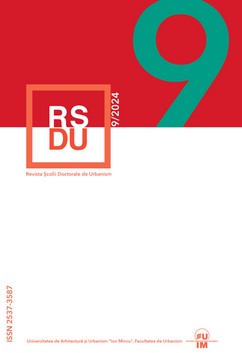Relația între autoritatea publică, proiectanți și beneficiari direcți și indirecți (comunitatea) în susținerea calității spațiului construit- studiu de caz Alexandria
The relationship between the public authority, designers and direct and indirect beneficiaries (the community) in supporting the quality of the built space-case study of Alexandria municipality
Author(s): Anne Marie GacicheviciSubject(s): Architecture, Public Administration, Rural and urban sociology, Sociology of Culture
Published by: Universitatea de Arhitectură şi Urbanism »Ion Mincu«
Keywords: local and central public administrations; harmonious and unitary development of localities; architectural quality; architectural aesthetics;
Summary/Abstract: The bivalent nature - scientific and cultural-artistic, of the complex field of activity of architecture - the discipline that aims to organize space at any scale, but mainly that in which the human being lives, identifies the activity of an architect as a practice of an "artist -creator", an aspect that implicitly determines the recognition of an architect's copyright over his creations in the field - works of architecture. The activity of the architect can be defined as a "cultural act of public interest with urbanistic, economic, social and ecological implications", and the final product is considered an architectural creation, which should be identified with the aesthetic response to functional problems, organizing both functional as well as aesthetically the built space. Starting from the idea that copyright is very well founded and regulated by law compared to the side of the aesthetic quality of a locality, which is not quantified in any form of regulation, in the present paper I displayed and analyzed positive and negative aspects that influence the architectural evolution of a city and the moral duty of the Chief Architect to promote aesthetics at the highest level, both through the position he occupies within the local or central public administration, and through the obligations established by the Architect's Code of Ethics. The inconsistencies between the normative acts that generated the emergence of the so-called legislative vacuum, ultimately determine that the resulting architecture misses its vocation to give meaning to places and implicitly to determine local and group identities. This demonstrated fact obliges the civil servant in the position of the Chief Architect to preserve, protect and transmit from one generation to another, the architectural heritage that he inherits and which also represents the essence of the cultural identity of our society.
Journal: Revista Şcolii Doctorale de Urbanism
- Issue Year: 9/2024
- Issue No: 1
- Page Range: 17-30
- Page Count: 14
- Language: Romanian

